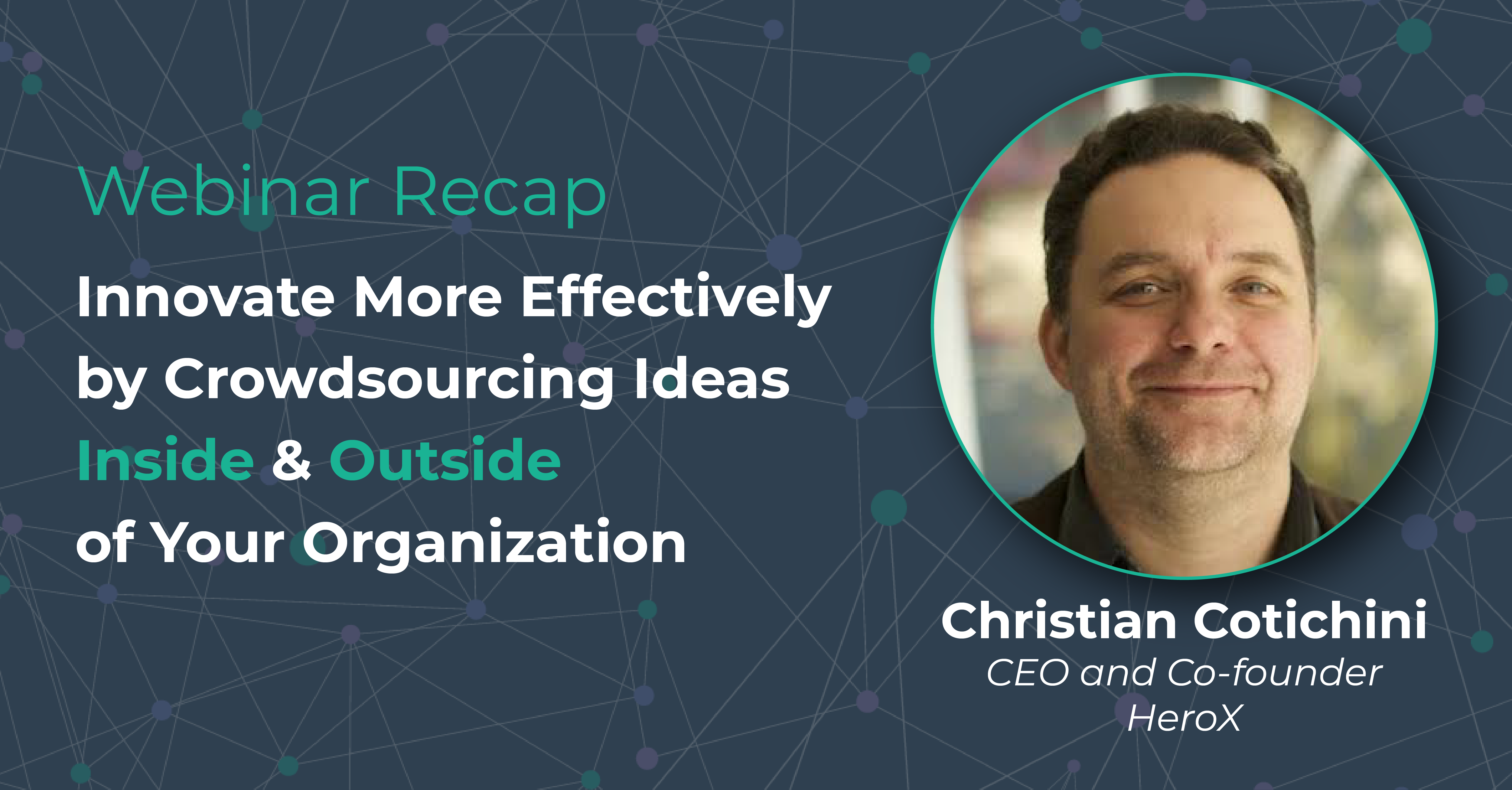Internal innovation, external innovation: Isn’t innovation just innovation all the time?
Not exactly. There are myriad forms of innovation, from the speed at which organizations innovate to where they focus their transformative efforts.
Ideawake CEO Coby Skonord recently spoke with Christian Cotichini—crowdsourcing expert and CEO of open innovation platform HeroX—on the differences between the two primary types of innovation crowdsourcing: internal innovation, tapping into the wisdom of your employees, and open innovation, opening challenges up to potential subject matter experts in the public.
Here are some highlights from the conversation.
Those Closest to a Product or Service Have Vital Insight on How to Improve It
One of the aspects we regularly hit on over here at Ideawake is that great ideas sometimes not only come from unexpected places, they also come from those who have the closest proximity to your customers and your product.
Internal innovation provides an open forum for all employees, regardless of role or department, to offer their insight. Such a forum is particularly powerful when it taps into frontline employees—employees who, day-by-day (and minute-by-minute), interact with and customers, answering product and services questions across the gamut and troubleshooting issues.
In other words, those employees who regularly interact with your company’s offerings have the greatest insight into how they can be improved. After all, they’re the ones hearing directly from customers what they currently like and what they wish they had.
While open innovation can yield outside-the-box (i.e., outside-the-organization) ideas, internal innovation program is the first-best method to discover tactical, mission-aligning solutions.
Open Innovation Builds an Audience Beyond Your Organization
One of the biggest upsides to internal innovation is that it engages with those who have built-in motivation and passion for your organization and its goals: your employees.
The downside to that upside, however, is that their ideas might be too aligned with your organization—or at least with how it currently operates.
An open innovation effort can reach subject matter experts who aren’t familiar with your organization beyond top-level info—what products or services you offer, where you’re headquartered, the estimated size of staff. As a result, their insights could be the right combination of outside-the-box and operationally feasible.
Of course, promising ideas that aren’t implementable—too expensive, not quite values-aligned—can’t. Nonetheless, those externally sourced ideas can serve as inspiration for internal actors.
Innovation Is Clear in Foresight
Understandably (but unfortunately) for a lot of organizations, innovation efforts take a backseat to more specific projects or pressing concerns.
This past year has, perhaps ironically, proven that both are possible: putting out fires and blazing new trails.
For companies across nearly all industries, the COVID-19 crisis necessitated the adoption of new technologies for everything from remote work policies to keeping important events on the calendar—an adoption that was years in the making and will likely stay intact for years to come.
As always though, hindsight is 20/20. So too is foresight. Many organizations that haven’t tried initiating an innovation program assume that they can do it themselves. When they encounter some of the features, not bugs, of innovation (like “failure), they might forgo future innovation efforts. With a solid innovation plan that’s either internal, external, or both, those organizations increase their chances of innovation success for the indefinite future.
Organizations assume that they just understand innovation. It’s almost unexamined. The way innovation looks in foresight—in the present and future—compared to hindsight is completely different.
Christian Cotichini, HeroX CEO
No Culture of Innovation When Crowdsourcing Without Internal Innovation
It is, of course, beneficial for your organization to collect good, bottom-line-improving ideas wherever they come from. However, focusing solely on crowdsourcing from outside your organization can hamper building a Culture of Innovation.
Employees who see leadership putting resources into collecting outside ideas may feel that their own aren’t valuable, preventing them from sharing ideas in the future.
Innovation is a continuous process, and it starts at home.
Two Sides of the Same Coin
Both approaches to innovation, internal and open, achieve similar objectives: they help grow your organization while edging out over your competitors.
Really, they’re two sides of the same coin. Your organization can succeed with one or the other, but you’ll surely succeed with both.
For more insights on crowdsourcing and open innovation, check out HeroX’s blog.


